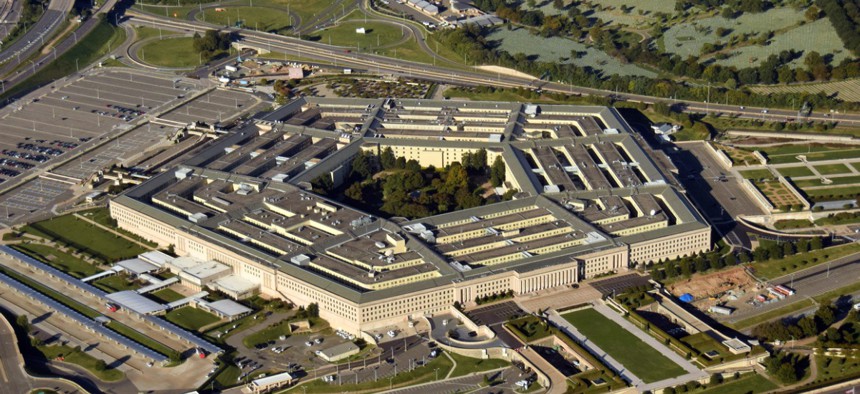Air Force Software Chief Provides Update on DOD’s Enterprise DevSecOps Initiative

Ivan Cholakov/istockphoto
He shared hard numbers to demonstrate how the massive implementation is saving the department time and money.
In and beyond 2021, DevSecOps offers the best options to successfully build software at scale while moving at a necessary pace, according to the U.S. Air Force’s chief software officer.
“The timeliness component is critical for cyber—but also just to compete, you want to be able to fail fast, but don't fail twice for the same reason. We can’t be left behind. China, Russia and North Korea are massively adopting DevOps,” Nicolas Chaillan said Tuesday during an ATARC summit. “And so the only way to succeed really in building software is to adopt DevSecOps, so we can have that baked in security, and that feedback loop between the warfighters.”
The military executive detailed how he and other officials are implementing such capabilities across the Defense Department.
DevSecOps is a now common information technology-aligned portmanteau of the words development, security and operations. People define it in a variety of ways, but at its core it's essentially an approach and culture around platform design that holds security as a shared responsibility prioritized across the full life cycles of IT. Complementary to agile software development, this approach builds on DevOps—or a set of practices that enables organizations to evolve products at a quicker rate than using traditional processes—by incorporating security throughout.
Typically, DevOps and DevSecOps workflows can involve test-driven development, automated testing and continuous integration.
On top of serving as the Air Force’s software chief, Chaillan is also the co-lead for the Defense Department’s Enterprise DevSecOps initiative. That joint program involves officials from the offices of the chief information officer and an under secretary defense, as well as from the Air Force, Defense Information Systems Agency, and the military services. They are delivering enterprise IT capabilities via two evolving mechanisms: DOD’s Cloud One and Platform One. Each is relatively nascent.
“Cloud One is our cloud office and Platform One is the DevSecOps team that will bring DevSecOps on top of the cloud, but also at the edge and on weapon systems and so on,” Chaillan explained.
While Cloud One is a cloud computing effort that delivers specific services to customers, Platform One is a customer DevSecOps platform that provides a collection of approved and compliant infrastructure as code playbooks, Kubernetes distributions and hardened containers, which Chaillan said operate “Lego blocks” that can be reused across programs and enable sharing capabilities across the department.
Through the initiative, officials are providing DOD-wide managed DevSecOps services, as well as cybersecurity solutions and development tools that align with them. Zero trust-based protections are built in and artificial intelligence and machine learning capabilities are also offered.
“Effectively, we’ve already saved 100 years” of planned program time, Chaillan confirmed. Stats from adopting a continuous authority to operate and improved feedback loop compound to that 100 years of “saved” time.
“I would argue, maybe we didn't save it—we just didn’t waste it,” he noted. “That's something to think about.”
Through the ATO and with all the managed services, DOD is also saving a calculated $12.5 million per software intensive program. Further, the programs enable reciprocity across the DOD spanning all classification levels.
“So some of the key numbers that we’ve seen, obviously faster mission delivery—106 times faster lead time from” development to production, the software chief noted. Officials also estimate that code deployments are more than 200 times more frequent, and that 22% less time is being spent on unplanned work and rework. They’ve also calculated that 50% less time is being put toward dealing with cybersecurity issues.
Further, while the department encourages failing fast, Chaillan and team have seen recovery rates that are more than 2,600 times faster than before, which he deemed “mind-boggling.” On average, development costs have been reduced by 40%, and there’s about 44% more time now being focused on building new capabilities instead of maintaining legacy code.
Morale is apparently improved by the work too, as employees involved in associated pursuits are said to be 2.2 times more likely to recommend their organization.
“Now, when you think of DevSecOps, and you want to push large organizations to DevSecOps, you want to be able to bring enterprise services so teams don't have to reinvent the wheel and build every piece of the stack in a vacuum—and that's where Platform One and Cloud One come in,” Chaillan said. “So effectively, we are bringing several capabilities that can be reused across the departments.”
The initiative is offering services to launch department-centered programs and software factories. Non-traditional startups, scientific technology partners, defense industrial base members and contractors are also engaging with the department in this realm.
“We are also partnering with other agencies outside of DOD, as well,” Chaillan said. “We have about 12 agencies outside of DOD consuming pieces of Platform One.”
They include the Internal Revenue Service, National Institute of Standards and Technology, and Veterans Affairs Department, among others. Further, the department is offering a range of training materials and on-boarding options, which include workshops and programs ranging from 1-day to 2 months.
“Continuous learning is foundational to DevSecOps and to enable teams to not become stale,” Chaillan said. “You need to invest in people.”
RELATED PODCAST




